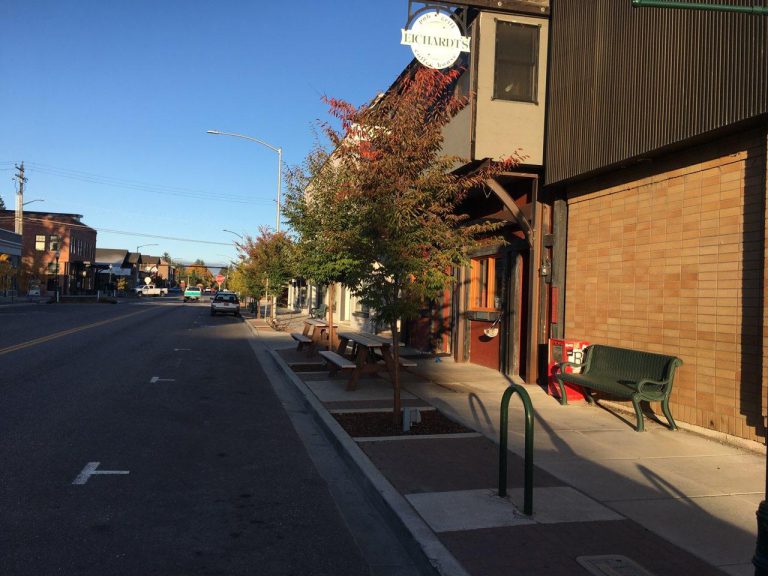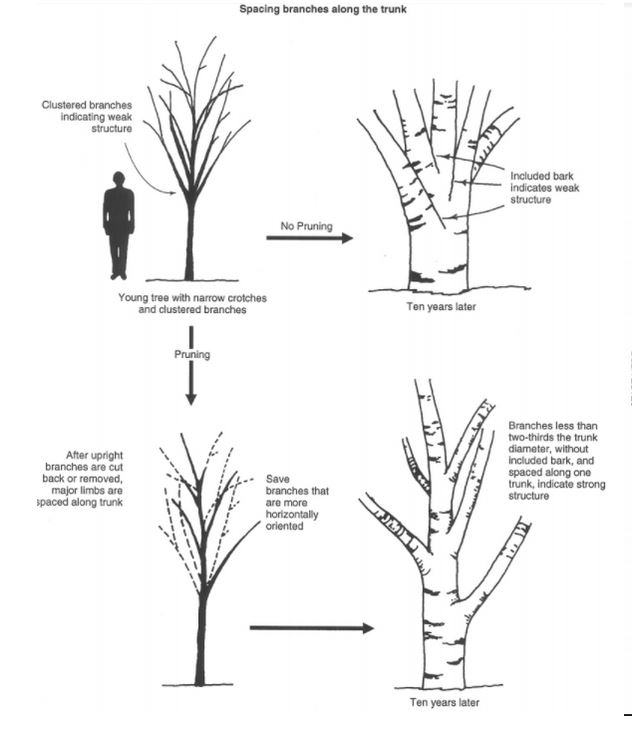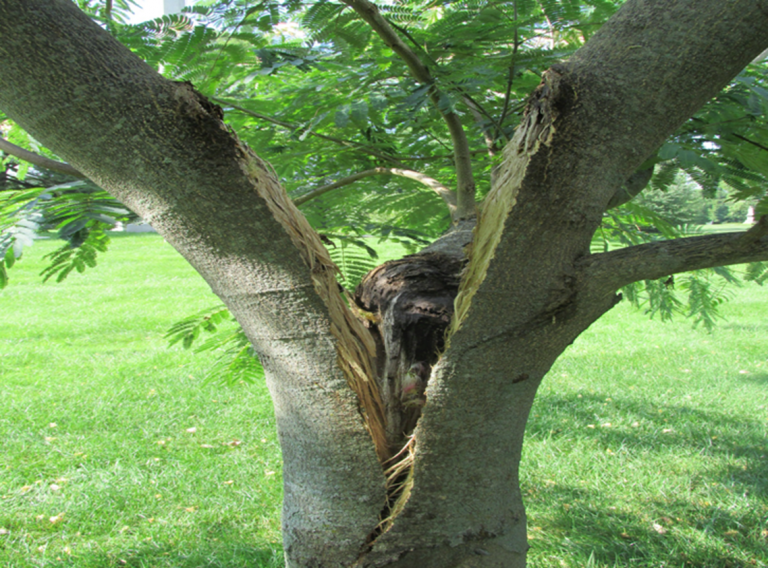Structural Pruning for a Resilient Urban Forest
By Garth Davis
IDL Northern Idaho Community Forestry Assistant

Choosing quality trees to be planted on public property and picking a site where they can thrive into maturity are great ways to make your urban forest more resilient. A structural pruning cycle for young trees will enable your trees to better withstand extreme weather events such as wind and heavy snow, giving large growing trees a better chance to become ecosystem service providers.
There are economic benefits to structural pruning, you get to address tree problems with hand pruners, hand saws on an orchard ladder instead of letting the problems grow into something that needs chainsaws, tree climbers, or bucket trucks. More large trees thriving in your community provide more ecosystem services which is good for a town’s bottom line. Important ecosystem services include improved air quality and stormwater retention and mitigation.
The goal of structural pruning is to create and maintain a single main stem in a tree through several pruning events while the tree is young, usually starting after the tree is established in the landscape. The pruning principles of removing or subordinating codominant stems, controlling the size and location of scaffold branches, and remediating weaker branch attachments creates a tree whose structure can withstand higher wind speeds and heavier snow loads.
A helpful video on structural pruning from Bartlett Tree Experts can be found here. Dr. Gilman’s lab at the University of Florida is also a good resource for pruning tips and can be found here.

As with any pruning you do, knowing the species you are pruning and how it will react to pruning is important. Species that grow faster or are more prone to suckering will need to be put on shorter pruning cycles, while species that are slow growing will need more time between pruning events. Sucker maintenance in between major pruning events may be necessary on some species to make sure you aren’t creating a bigger problem.
North Idaho is growing as fast as anywhere. This growth creates opportunities for communities to implement structural pruning programs. Within the last few years both Priest River and Sandpoint have had large (relative to their size) plantings installed in their downtown cores. These plantings represent a large investment in the beautification of the town centers. To better help the new trees thrive, both communities took advantage of the technical assistance offered by the Idaho Department of Lands to train their employees through a pruning workshop and practice sessions.

The Priest River and Sandpoint employees were taught the principles of structural pruning, watched while the Community Forestry Assistant demonstrated the principles while pruning several of the new trees, then they took the pruners and saws and made the cuts under the guidance of the Community Forestry Assistant. Through this process the city employees became familiar with the species they would be maintaining in these high-profile plantings.
If you are interested in having your community’s employees trained in the principles of structural pruning contact the Idaho Department of Lands Community Forestry Assistant in your area to begin the process.

